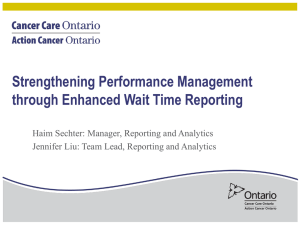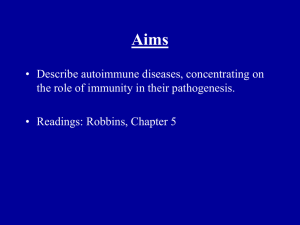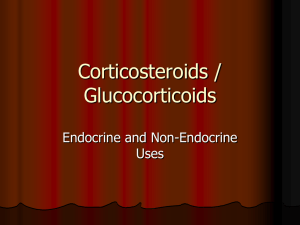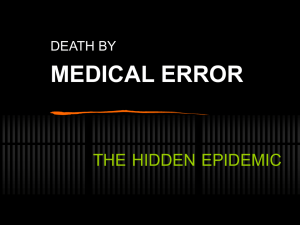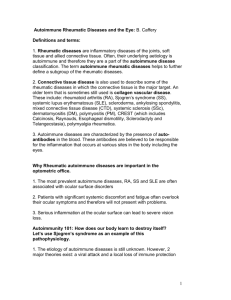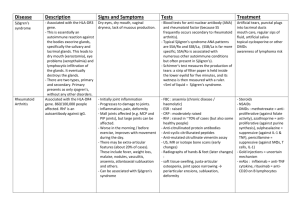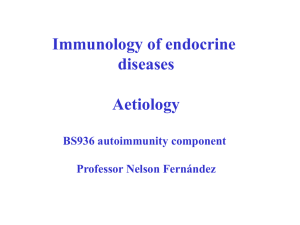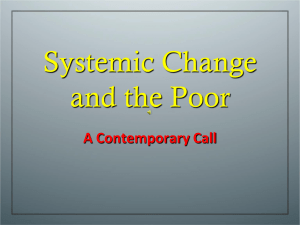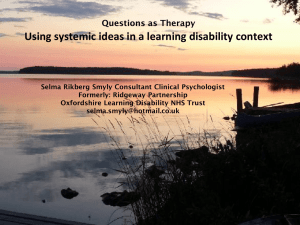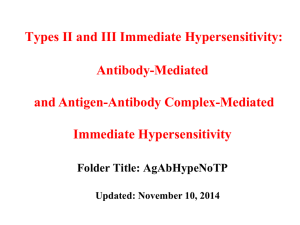Oral Mucosa Associated Diseases, 2013 (ppt
advertisement
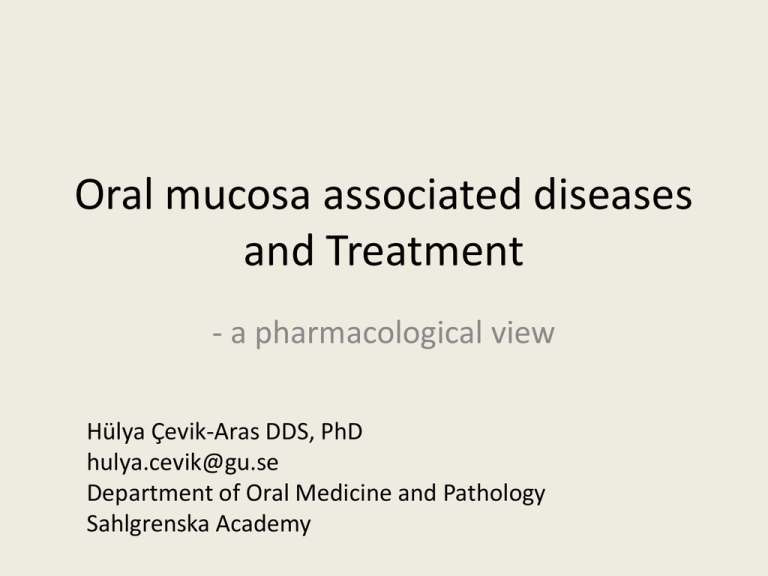
Oral mucosa associated diseases and Treatment - a pharmacological view Hülya Çevik-Aras DDS, PhD hulya.cevik@gu.se Department of Oral Medicine and Pathology Sahlgrenska Academy Oral mucosa associated diseases • Recurrent aphthous stomatitis (RAS) • Benign migratory glossitis • Oral Lichen planus (OLP) • Mucous membrane pemphigoid • Behçet’s disease • Systemic diseases associated oral lesions (Crohn’s disease, leukaemia, HIV, diabetes) Recurrent aphthous stomatitis (RAS) • painful oral ulcers and recurring condition • may involve buccal, labial, tongue, hard and soft palate mucosal surfaces. • Shallow ulcers covered by gray, yellow or white plaques with erythema. RAS (Aetiology&Treatment) • Unknown aetiology: possible genetic predisposition – Some factors local trauma, stress, local infections, food allergy, hormonal fluctuations, exposure to chemicals. – In association with systemic diseases including HIV infection, Behcet’s disease, inflammatory bowel disease and celiac • Treatment: – topical corticosteroids – Clorhexidine gluconate mouthwash decrease the severity of episode – More severe conditions immunosuppressive therapy Benign Migratory Glossitis (BMG) • • • • Affects 2% of population psoriasis Unknown aetiology Irregular dekeratinized desquamated papillae (red in color), surrounded by elevated whitish or yellow margins due to hyperkeratosis. • Neutrophil migration into epithelial layer Oral Lichen Planus (OLP) • Chronic inflammatory condition • Affects 2 % of population. • Unknown aetiology • Hyperkeratosis: appearing mostly as white slightly raised lines and/or erythema, erosions OLP (Pathogenesis&Treatment) • T cell mediated autoimmune disease: cytotoxic T cell induced apoptosis of epithelial cells. • Lichenoid lesions: – include lichenoid drug reactions (anti-hypertensive agents, NSAID, anti-malarials). • In association with systemic diseases: – autoimmune liver disease, chronic active hepatitis and hepatitis C virus infection, graft versus host disease Treatment: topical/systemic steroids Mucous membrane pemphigoid (MMP) • Autoimmune vesiculobullous disease affects mainly oral mucosa, ocular involvement • Ig and complements deposit along basement membrane • Destruction of hemidesmosomes, Nikolsky’s sign, mucosa separates from underlying connective tissue • Treatment: topical / systemic steroids In severe conditions immunosupp therapy Behçet’s disease • A rare autoimmune disease • T cell mediated auto-inflammation of blood vessels. • Triple-symptom complex: recurrent oral aphthous ulcers, genital ulcers, and uveitis. • Non-scarring oral lesions in the form of aphthous ulcers • Systemic involvement of visceral organs such as GIS, pulmonary, musculoskeletal, cardiovascular and neurological systems. • Treatment: easing the symptoms, reducing inflammation and controlling immune system. • high dose steroids/ immunesupp therapy Pharmaceuticals agents in Oral medicine • • • • • • Anaesthetics/analgesics (palliative medicine) Anti-inflammatory agents Anti-viral, Anti-fungal agents Local/systemic corticosteroids Immunomodulatory/immunosuppressive Palliative medicine -symptomatic treatment • relieve symptoms without having a curative effect on the underlying disease or cause • reduce pain and uncomfort • help to enhance the quality of life Anaesthetics/Analgesics Lidocain cream/spray Anaesthetic, analgesic NSAIDs: Analgesic, antipyretic, anti-inf effect by COX inhibition – Paracetamol: mild analgesic COX 2 – Benzydamine hydrochloride suspension Analgesic, anti-inf NSAID, effect by inhibiting prostaglandin synthesis Nonsteroid anti-inflammatory drugs (NSAIDs) Steroids Anti-viral agents Treatment of herpes infection • Acyclovir: local/systemic treatment • Valacyclovir: prodrug of acyclovir – Better bioavailability – Systemic treatment • For treatment of severe viral infections otherwise palliative treatment. Anti-fungal agents Candida albicans infections • Nystatin/Mycostatin – Toxic for parenteral use – Oral suspension, cream • Mikanazol – Oral gel, suspension/cream • Flukonazol – Systemic treatment (oral or iv) Corticosteroids • naturally produced in adrenal cortex: mineralocorticoids (aldosterone) and glucocorticoids (cortisol) • involved in physiological processes: Stress response, Immune response, Anti-inflammatory, Fat and protein metabolism Production of cortisol • by adrenal glands about 10-30 mg/day mostly in the morning, • Only 5 % is active others bound to serum proteins. • produce x10 when needed. • Extra cortisol helps body to cope with stress such as infection, trauma, surgery, or emotional problems. • When the stressful situation ends, adrenal hormone production returns to normal. Release of cortisol The paraventricular nucleus (PVN) a neuronal nucleus in hypothalamus activated by stressful and/or physiological changes HPA axis: hypothalamic-pituitary-adrenal axis Synthetic glucocorticoids treatment of pain and/or inflammation: • arthritis, dermatitis • allergic reactions, asthma • autoimmune diseases Mechanism of action • enter cells where they combine with steroid receptors in cytoplasm • In nucleus controls synthesis of proteins, including enzymes that regulate cell activities • Control over a wide range of metabolic functions including inflammation Corticosteroid Drugs Include: Short acting t1/2 < 12 h Intermediate acting t1/2 12-36 h long acting t1/2 > 36 h Corticosteroids in Oral medicine Most of the cases intermediate-acting topical steroids. • Clobetasol propionate –0.05 % oral gel or oral paste • Triamcinolone (0.1 % oral paste) Systemic treatment with prednisolone in severe cases Clobetasol propionate • analogue of prednisolone • in skin disorders such as eczema, psoriasis and autoimmune diseases like lichen planus. • anti-inflammatory • topical corticosteroids, cream and ointment forms; high range of potency • recommended to use <2 weeks, • not exceed 50 mg/week (risk to suppress HPA axis) Immune homeostasis or Autoimmunity antigen + antigen Immune homeostasis Regulatory T cells (Treg, Tr1) Pathogenic T effector cells (TH1, TH17, TFH) Genetic background (MHC, non-MHC genes) + environmental factors (smoking, infection,..) Autoimmunity Regulatory T cells (Treg, Tr1) suppression Pathogenic T effector cells (TH1, TH17, TFH) Immunomodulatory/Immunosuppressive agents 1) Immunosuppresives: – Cyclosporine – Tacrolimus 2) Antiproliferative, cytotoxic agents: – Azathioprine – Myophenolate mofetil – Methotrexate 3) Cytokine modulators: – Anti-TNF-α agents 1) Immunosuppressive agents Cyclosporine/Tacrolimus • Immunosupp, inhibit T cell activity by inhibiting the transcription and release of IL-2 and proinf cytokines. • Mech of action: they diffuse into T-lymphocytes and block calcineurine activity –an enzyme responsible for IL-2 transcription. • Have no effect on antigen recognition by T cells. • for treatment of RA, psoriasis, severe atopic dermatitis and in organ transplantation to prevent rejection. 2) Anti-proliferative, cytotoxic agents Azathioprine – It is a prodrug and converted to active metabolite in the body – immunosuppressive, DNA synt inibition mainly effects T and B cells – adverse effects: carcinogenic; bone marrow suppression. – Therefore Myophenolate mofetil is increasingly used in place of azathioprine 2) Anti-proliferative, cytotoxic agents Mycophenolate mofetil (MMF): – less toxic alternative to azathioprine, – Selective cytotoxic agent for T and B cells, – Mech action: blocks the production of guanosine nucleotides required for DNA synthesis. – supresses lymphocyte prolif. and ab production by B cells – in transplant medicine, autoimmune disease 2) Anti-proliferative, cytotoxic agents Methotrexate • In treatment of autoimmune diseases • At high doses: toxic effect on rapidly dividing cells (malignant, myeloid, gastrointestinal and oral mucosa). Therefore as a chemotherapy agent. – Mech: inhibits metabolism of folic acid. Folic acid is needed for the de novo synthesis of the nucleoside thymidine, required for DNA synthesis. It overall inhibits the synthesis of DNA, RNA, and proteins. • At low doses: immunosupp effect by inhibiting T cell activation. 3) Cytokine modulators • anti-TNF-α antibodies (infliximab, adalimumab, etarnecept) – By binding TNF-α neutralise biological activity and inhibit its proinf. effects • suppress adhesion mol. expression • decrease IL-6 and IL-1 levels – Used in autoimmune diseases – Adverse effects: increase risk for infections, hypersensitivity reactions, blood disorders – expensive antigen Other agents • Dapsone: anti-bacterial effect – inhibits neutrophil functions such as chemotaxis, oxidant production – Irreversible inhibition of MPO • Colchicine ( a plant poison): anti-inf drug – Blocks COX-2 and prostaglandin synthesis – Mitosis inhibiting function – Inhibition of neutrophil chemotaxis and mild cytokine modulation – Combination therapy with dapsone for treatment of acute attacks of autoimmun dis like, Behcet’s Other agents • Hydroxychloroquine: antimalarial drug – has immunmodulatory properties – diminish the formation of peptide-MHC protein complexes required to stimulate T cells and result in down-regulation of the immune response – suppress neutrophil functions + inhibits IL-1, TNF alpha – effective in treatment of lichen planus and some other autoimmune dis. References • Clinical Oral Medicine and Pathology. Jean M. Bruch, Nathaniel Simon Treister (e-book). • Immunotherapy in 2020 Visions and Trends for Targeting Inflammatory Disease. A. Radbruch, H.D. Volk, K. Asadullah, W.-D. Doecke (e-book). • Medical Pharmacology at a Glance. Neal, Michael (e-book). • Immunopharmacology. Manzoor M. Khan ISBN: 978-0-387-77975-1 (e-book.)

